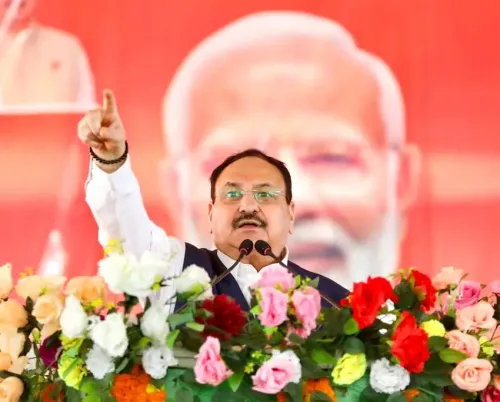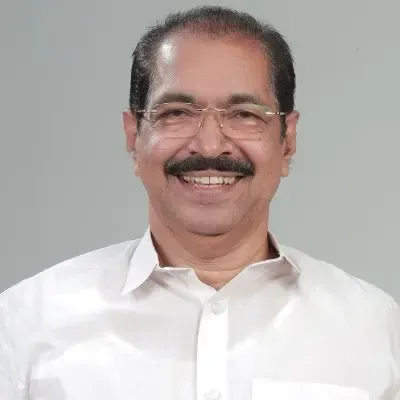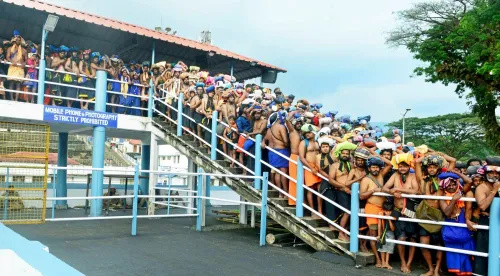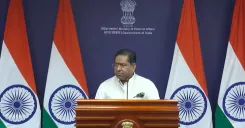What Caused the Tragic Collapse of the Vadodara Bridge?
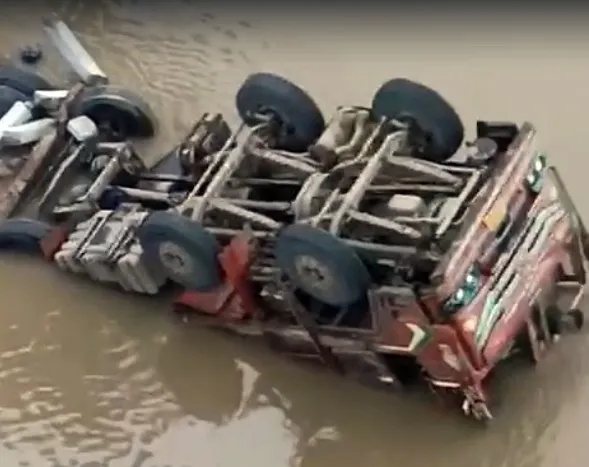
Synopsis
Key Takeaways
- The Gambhira bridge collapse has tragically resulted in nine deaths.
- Prime Minister Modi has announced financial compensation for victims' families.
- The incident has raised serious concerns about infrastructure safety in Gujarat.
- Rescue operations are ongoing, with a focus on recovering missing individuals.
- A thorough investigation has been mandated by the state government.
Vadodara, July 9 (NationPress) Officials confirmed on Wednesday that the death toll from the Vadodara bridge collapse has tragically increased to nine. Prime Minister Narendra Modi expressed profound sorrow over the tragic loss and announced ex gratia compensation for the victims' families.
The bridge, which had stood for 43 years over the Mahisagar River in Gujarat's Vadodara district, collapsed early Wednesday morning, resulting in at least nine fatalities and numerous injuries.
In a heartfelt message, PM Modi declared a compensation of Rs 2 lakh to the kin of those who lost their lives and Rs 50,000 for the injured, funded by the Prime Minister’s National Relief Fund (PMNRF).
“The loss of lives from the bridge collapse in Vadodara is incredibly saddening. My condolences go out to the bereaved families. Wishing a swift recovery for the injured,” the Prime Minister’s Office (@PMOIndia) conveyed on X.
The collapse transpired around 7:30 a.m. on the Gambhira bridge, near Mujpur village in Padra taluka.
This bridge was a crucial connector between Vadodara and Anand districts, serving as an important route linking Central Gujarat to Saurashtra. Reports indicate that multiple vehicles, including two trucks, an Eeco van, a pickup van, and an auto-rickshaw, were traversing the bridge at the time of the incident when a significant slab between two piers collapsed, sending the vehicles into the Mahisagar River.
Footage from the scene depicted a fuel tanker hanging precariously from the edge of the fallen structure, twisted metal submerged in the river, and the harrowing cries of a woman begging for assistance for her son who was trapped. Local visuals captured the extent of the devastation and the frantic rescue efforts underway.
Rescue operations were promptly initiated by teams from the Vadodara Fire Department, the National Disaster Response Force (NDRF), and local volunteers. Heavy machinery, divers, and cranes were utilized to search for missing individuals and recover the damaged vehicles. As time progressed, the focus shifted from rescue to recovery, with emergency personnel contending with the river's currents.
In light of this disaster, Gujarat Chief Minister Bhupendra Patel has mandated a thorough investigation.
“Technical experts have been directed to assess the site and perform a detailed inquiry to ascertain the cause behind the collapse,” Patel announced.
While officials noted that routine maintenance was conducted “as necessary,” the unexpected failure of such a longstanding structure has raised serious questions regarding engineering oversight and systemic neglect.
The Gambhira bridge, measuring 900 meters long with 23 piers, was a vital transit route for daily commuters and freight. Its collapse has severed connectivity between Anand, Vadodara, Bharuch, and several regions of Saurashtra, inciting significant traffic disruptions and rerouting.
The opposition Congress party vehemently criticized the incident, labeling it as indicative of the alleged corruption and decline associated with the much-touted “Gujarat Model.”
Sharing videos of the collapsed bridge on social media, the party stated: “This tragic event, which led to numerous vehicles plunging into the river, has resulted in heartbreaking fatalities and injuries. The Congress family extends its deepest condolences and wishes for a quick recovery for the injured.”
The party also accused the BJP-led state government, asserting that the collapse unveils “widespread corruption” within infrastructure projects.
Local residents claimed they had repeatedly warned about the deteriorating state of the bridge, which had become notorious as a suicide point owing to inadequate safety measures. “This was an accident waiting to happen,” a villager from Mujpur remarked, citing the frequent vibrations experienced during heavy vehicle usage.

